分享以Grids插件在30天做出30款游戏的经历
作者:Jonathan Bailey
为什么是30天做30个游戏
一天下午,我和Herman正在讨论快速原型,这是我们当地的游戏开发社区Make Games South Africa的一个热门话题。我们都同意这是选择下一个要开发的产品的最好办法,但它还有助于改进我们的Unity插件Grids。通过制作大量游戏,我们可以制作新特征的原型,获得反馈和甚至发现和修改一些漏洞。我们决定把这变成一个挑战:在11月的这30天里,每天制作一个游戏,以证实我们的期望:Grids可以帮助你快速制作游戏。
在这个月里,我们在Gamelogic的办公室里根据矩形、六边形、三角形、五边形和不规则图形网格制作游戏。我们制作了形成球体、圆盘和螺旋状的游戏。我们制作了嵌套网格和无限网格的游戏。我们制作了益智游戏、街机游戏、迷宫游戏和模拟游戏、2D游戏和3D游戏、奔跑游戏、桌面游戏和甚至一款《Game of Life》的翻版。我们制作了关于僵尸的游戏、蚂蚁的游戏、野生动物的游戏、伞兵的游戏、怪物的游戏、变形虫的游戏和蛇的游戏。我们制作了发生在空间站的游戏、蜂巢的游戏和过山车的游戏。
以下是我们的制作方法。
我们是怎么做的
我们的团队只有3个人:Jonathan Bailey(本人)、Herman Tulleken和Eduard Beukes。这个项目是由我和Herman发起的。
当你在30天里制作30个游戏时,组织、截止日期和交流是非常关键的。我们构造了一条清晰明确的流水线:
1、Herman每天向Ed简报一个游戏想法。
2、Ed就在这天里执行这个想法,然后交付给Herman(Herman自己也要执行第三个游戏想法)。
3、Herman对游戏做出任何必要的修改、调整或美术改变。
4、他还要给游戏制作HTML链接,和向我解释开发中的技术知识。
5、最后,由我编写这篇报告,更新网站和发表在论坛和社交媒体上。
我们从执行到发布一个游戏之间有3天时间。这使我们有充分的时间测试游戏的可玩性,编写和发布。如果我们进度有所滞后,这样的安排还使我们有缓冲的时间。就这样,我们的时间安排使我们成功地每天发布一款游戏。
周一我们与Ed开了一个讨论会,计划这个项目和向他解释一些技术的方案。每天我们都会花时间列出什么时间必须完成什么的提纲。如果我们赶不上进度,就必须削减掉一些东西。我们还一边制作一边调整规模。我们从简单又小的游戏入手。这使Ed更快上手这种技术。一旦开发进展顺利,我们就增加复杂度和规模。
我们的Grids插件帮我们做了许多工作;它有许多内置功能。使用这个工具使我们得以全心全意地执行游戏而不是琢磨网格是怎么运作的。这还使我们得以迅速制作出不一样的游戏。
我们如何克服困难
当你按照一个有重叠的流程制作30个游戏时,你会发现很难记录一切事情。以下是我和Herman的一次深夜闲聊。
我:嗨,老兄你进展到哪了?我刚收到你发来的关于第6个游戏的邮件。
H:是啊。
我:但我记得这封邮件里描述的是周五完成的第5个游戏,Ed明天应该做第8个游戏了吧?
H:不可能,我们还没做完第6个游戏呢。
我:那么你为什么说你今天在做第7个游戏?我们今天应该完成第7个游戏吧?
H:呃,我晕了……
我:所以我们到底进展到哪了?
H:好吧,他发了第6个游戏到我的邮箱了。所以我们已经完成它了。抱歉啊。
我:好吧,今天的游戏是游戏7。那么明天是游戏8了?
H:游戏7也已经完工了。是啊。
我:好吧,明天我们再清理细节吧。我们要制作一个列表。
H:你让我很焦虑啊。
我:你才让我焦虑啊(大笑)。我还是不知道游戏5,因为昨晚上你告诉我游戏5是关于环形怪物的!
H:是啊!哦,不对。
我:你刚发给我的邮件说明天要做那个游戏?游戏6?
H:那是游戏4,游戏5是关于线条在网格上的。好吧,我们明天再理清楚吧。一切进展顺利。放轻松点(笑)。
我:好吧,我们的组织肯定不够好。但是,我们还是明天再清理吧。
H:我觉得很好啊。
我:第4天和第8天你让我写相同的游戏。但你自己却叫它第6个游戏。我觉得这样不好。明天见。
H:再见。
这就是第一周发生的事!到这个挑战的末尾,我们忘记了4个游戏,且误删了其中一个。我们查找和恢复了一切,但这表明管理30个重叠的项目是多么困难的事,即使你认为组织得不错。
这个项目进展到三分之一时,我们决于扩大范围,使用新类型的网格(形成圆盘的网格)。这使我们的项目第一次面临困境。游戏11使用了这种新技术,花了好一阵子才执行完;但游戏9(野生动物模拟)的平衡花的时间比预期的更长;游戏10有一个非常棘手的漏洞。因为这几个有问题的游戏,我们损失了一半的缓冲时间。我们立即缩减了范围。我们把缓冲时间又弥补过来了,等到我们熟练了,我们再次扩大范围,开发更多新技术和转向3D游戏。
到这个月底时,构思好游戏变得困难了。虽然已经觉得创新枯竭,但我们希望来个漂亮的收尾。这意味着制作更加独特的游戏来证明Grids的强大,但在做完25个不同的游戏之后,这显然不容易。
我们还做了甚至没有发布的游戏。因为我们做到一半时发现对它并不满意。我们打算延迟它的发表,但随着项目进展,它变得越来越不堪入目,所以等到我们落下3个游戏时,我们决定放弃它。
最后,周日的开发和发布工作并不如你想像的那么有趣。周五晚上更糟糕。
我们学到了什么
在项目期间,我们受益匪浅。
灵活的计划和在必要时调整范围是非常重要的。一开始,我们罗列了30个游戏创意,但因为范围太大而砍掉了不少。我们从用户的问题和讨论中获得新想法。一款游戏的开发带来新想法和技术。我们调整了游戏的范围,这样就能够完成挑战,但为了显示Grids的灵活性,我们也偶尔扩大范围,即开发更复杂和特殊的游戏。
交流的重要性。一遇到麻烦我们就得交流沟通,但只在必要时。当你只有一天的时间完成工作时,不必要的交流可能很耽误时间。想法是不讨论的;事情是不争论的。你做决定,然后就开始执行。
优先次序很重要和不要困死在一个问题上。如果某物变得太复杂、漏洞太多,或者我们想不出解决办法,我们就会另谋出路——放弃它或者简化它。不要盲目坚持,前进最重要。
执行模式。例如,用一致的方式动画网格上的格子、处理游戏结尾和声明等。
程序生成关卡的方法。特别是,使用对称和随机技术来产生看起来是设计出来的变体。
有一个好的游戏控制基地很重要。我们没有,它的重要性也体现出来了。
用动画来表达的重要性。随着项目进展,我们动画了更多东西,游戏也改进了。
我们插件的不足。我们学习到的最重要的一课是,我们的插件仍然存在不足。比如,我们发现它仍然处理矩形网格。我们还发现许多算法可以使开发变得更简单。
我们有什么收获
这个挑战活动的收获不仅是改进了Grids和证明了我们的期望。
从我们启动项目那天起,我们的网站流量就直线上升,我们的销量甚至翻倍了。我们得到本地和国外社区的大量反馈,据此制作了大量内容和开发了新技术和新网格。
这个项目还显示了网格能做什么。我们认为,我们通过使用新奇的网格和以各种方式使用网格,做出许多具有不同机制的游戏,为人们思考网格开辟了新思路。
我们已经尝试了其他推广Grids的传统办法,但这次活动的效果最显著。毕竟我们的实验有些疯狂了。更重要的是,我们成功了。现在的问题是……接下来我们要干什么?
我们不可能再去使用传统的方法营销Grids。除了无聊,还没什么效果。我们正在寻找新挑战,更多新奇的想法,更快的原型制作法。我们已经尝到疯狂的甜头了,我们还想要更多。
(本文为游戏邦/gamerboom.com编译,拒绝任何不保留版权的转载,如需转载请联系:游戏邦)
How we made 30 games in 30 days
by Jonathan Bailey
Why 30 games in 30 days
One afternoon Herman and I were talking about rapid prototyping, a hot topic in our local game development community, Make Games South Africa. We agreed this would be the best way to choose our next product to develop, but it could also help us improve our Unity plugin, Grids. By making a bunch of games, we could prototype new features, get some feedback and even discover and fix some bugs. We turned this into a challenge: we would make 30 games in 30 days to prove our promise that Grids helps you to make games fast. One game a day for the month of November.
During the month we at Gamelogic made games on rectangular, hexagonal, triangular, isometric, Cairo pentagon, rhombille and irregular grids. We made games wrapped onto spheres, discs and spirals. We made games on nested grids and infinite grids. We made puzzle games and arcade games, maze games and simulation games, 2D games and 3D games, runner games, board games and even a simulation of the Game of Life. We made games with zombies, ants, wildlife, paratroopers, monsters, amoebas, and snakes. We made games in space stations, on honey combs and on roller coasters (play all 30 games here).
Here is how we did it.
Game 2
How we got it done
Our team had three people: Jonathan Bailey (me!), Herman Tulleken, and Eduard Beukes, a programmer Herman and I got on board for this project.
When you make 30 games in 30 days, organisation, deadlines and communication is vital. We constructed a clear and precise pipeline:
Herman would supply the game idea to Ed in a daily brief.
Ed would implement the game in a day and hand it over to Herman (Herman also implemented a third of the games on his own).
Herman would make any necessary tweaks, fixes or art changes.
He would create the HTML link for the game and give me any technical insight from development.
Finally, I would write the blog post, update the website and post on the forums and social media.
We had 3 days in-between implementing and releasing each game. This gave us time to get the games playable, to write about them and to publish them. It also gave us a bit of leeway in case we fell behind. This way we could make up the time without failing to release a game each day.
We had Monday meetings with Ed to plan for the week and explain some of the tech and best practices to him. Each day we spent time outlining exactly what needed to be done and when. If we weren’t keeping to the schedule, something had to be cut. We also adjusted the scope as we went on. We started off with simpler games with a smaller scope. This allowed Ed to get used to the tech. Once development was going smoothly we increased the complexity and scope.
Our Grids plugin did a lot of the work for us; it has a lot of functionality built in. The tool provides an abstraction to how grids work so that you can concentrate on implementing the game instead of the grid. This allowed us to get unique games out the door fast (that’s our sales pitch out the way!).
Game 5
Game 6
How we struggled
When you make 30 games with an overlapping pipeline, it becomes very difficult to keep track of everything. Here is a watsapp conversation between Herman and me late one night.
JB: Hey dude. u around?
JB: I just got your email for game 6
HT: Yup Yup
JB: But from what I can remember that was the description for game 5 that was done on Friday and that Ed should be doing game 8 tomoz?
HT: No, we have no game 6 yet
JB: Then y did u agree that u were making game 7 today?
JB: We should have 7 games after today?
HT: Hmmm I’m confused….
JB: So what’s going on?
HT: Oh…. Ok
HT: He sent game 6 to my gmail
HT: So we do have it
HT: Sorry man
JB: Ok and today’s game is game 7. So tomorrow is 8?
HT: Nethertheless; game 7 is also finished
HT: Yes
JB: Ok cools we can sort out the details tomoz
JB: We are going to make a list ![]()
HT: You make me nervous
HT:
JB: U make me nervous lol. Game 5 is still unknown to me because last night u told me game 5 was the one with circling monsters!
HT: It is!
HT: Oh no
JB: u just sent me an email briefing Ed for that game tomorrow? as game 6?
HT: That is game 4; game 5 is lines on a cairo grid
HT: Ok lets sort it out tomorrow
HT: Everything is fine
HT: Relax
JB: Well our organisation is definitely not fine. But yes let’s sort it out tomorrow
HT: Mine is perfect
HT: Make sure you pick up a box of valium for us
JB: u have me writing about the same game on day 4 and 8. But you have called it no 6
JB: I don’t think its fine
JB: C u tomoz
HT: Lol cheers dude
This happened in the first week! By the end of the campaign we had temporarily lost four of our games and had by mistake deleted one of them. We managed to locate and retrieve everything for our video, but this shows how difficult it is to manage 30 overlapping projects, even if you think you are well organised.
About a third of the way into the project we decided to increase the scope and to use a new type of grid (a grid wrapped around a disc). This came at a bad time and for the first time the project was at risk. The new tech was used in Game 11 and took a while to implement, but Game 9 (a wildlife simulation) took longer than expected to balance and Game 10 had a tricky bug. In the space of a few problematic games we lost half of our buffer. We immediately reduced the scope. We made the buffer up and once we were on top of things, we increased the scope again, developed more new tech and moved onto 3D.
It became difficult to think of cool game ideas by the end of the month. Beside from being a bit fried, physically and creatively, we wanted to end with a bang. This meant making more unique games to show off Grids, which after 25 odd games wasn’t so easy.
We also made a game that we didn’t even publish. It was made around half way but we weren’t happy with it yet. We delayed its release but it became more and more difficult to include seeing as though we were upping our game as we went, and by the time we had 3 games left, we decided it wasn’t good enough to include.
Lastly, Sunday development and publishing wasn’t as much fun as you would think. Friday night was worse!
Game 11
Game 16
What we learnt
During the project we learnt a lot.
The importance of having a flexible plan and adjusting scope as necessary. We had a list of 30 game ideas when we started but cut many of them due to their scope. We got new ideas from user questions and user discussions. Development of one game led to new ideas and tech for others. We adjusted the scope of our games so that were able to complete the challenge but we also increaed it at times to show off the flexibility of grids by developing more complex and unique games.
The importance of communication. We had to communicate as soon as there was trouble, but only if necessary. Unnecessary communication can be very costly when you only have one day to get the job done. Ideas were not discussed; things were not debated. You made a decision and moved to implementation.
The importance of prioritization and not getting stuck on problems. If something was too finicky, buggy, or we couldn’t figure it out, we found another way, cut it, or simplified it. It was important to not fiddle, but move on.
Implementation patterns. For example, consistent ways to animate things between cells in the grid, handle game end, and handle states.
Ways to generate levels procedurally. Especially techniques that use symmetry together with randomness to have variety that looks designed.
The importance of having a good base of game controls to work from. We did not have one, and it shows.
The importance of animation to communicate (as opposed to snapping). As the project went on, we animated more things, and the games improved.
What our library lacks. One of the most useful things we learnt is all the places where our library could do even more for the user. For example, we realised it’s still tricky to work with triangular grids; we found many algortihms we could add to make life easier.
Game 24
Game 26
How we benefited
The benefits of the campaign went beyond improving Grids and proving our promise.
From the day we launched the campaign our web traffic shot up and our sales more than doubled. We got a lot of feedback from the local and international community, created a huge amount of content and developed new tech and new grids.
The project was also a showcase of what can be done using grids. We like to think that we got people thinking about grids differently by using novel grids and using grids in various ways to make a bunch of different games with different mechanics.
We had tried more traditional ways of marketing Grids, but this campaign blew everything else out the water. We tried something slightly crazy. More importantly we finished it. The question is now… what’s next?
We can’t just go back to marketing Grids the traditional way. Besides from being boring, it hasn’t been effective. We’re looking at new challenges, new out of the box ideas, and more rapid prototyping. We’ve got a taste for crazy and we want more.
Play all 30 games here
Game 28(source:gamasutra)
上一篇:游戏设计不可或缺的5个基本元素
下一篇:玩家对手机游戏上瘾的10大迹象


























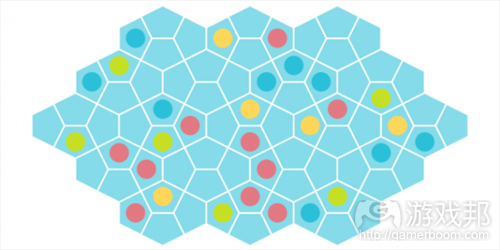
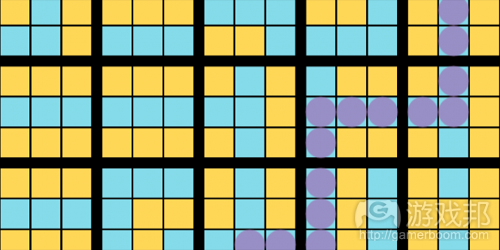


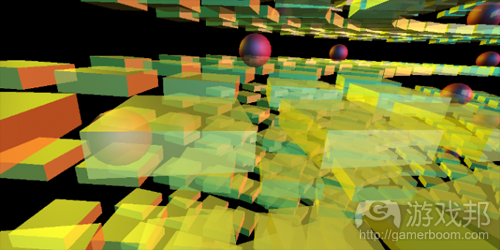
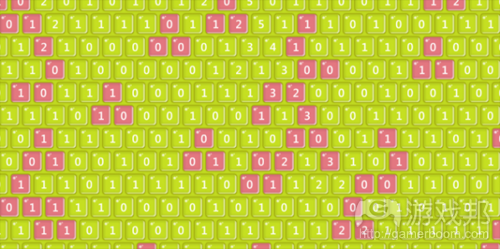
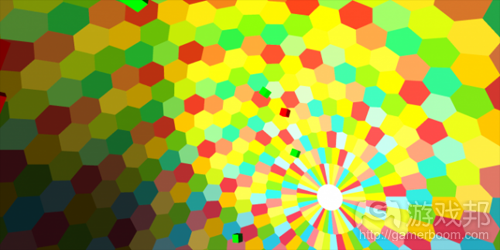
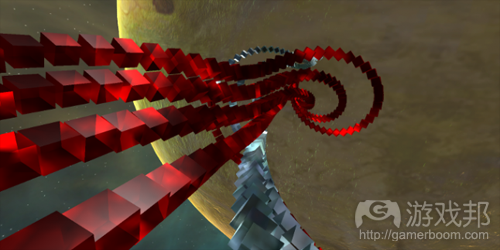














 闽公网安备35020302001549号
闽公网安备35020302001549号